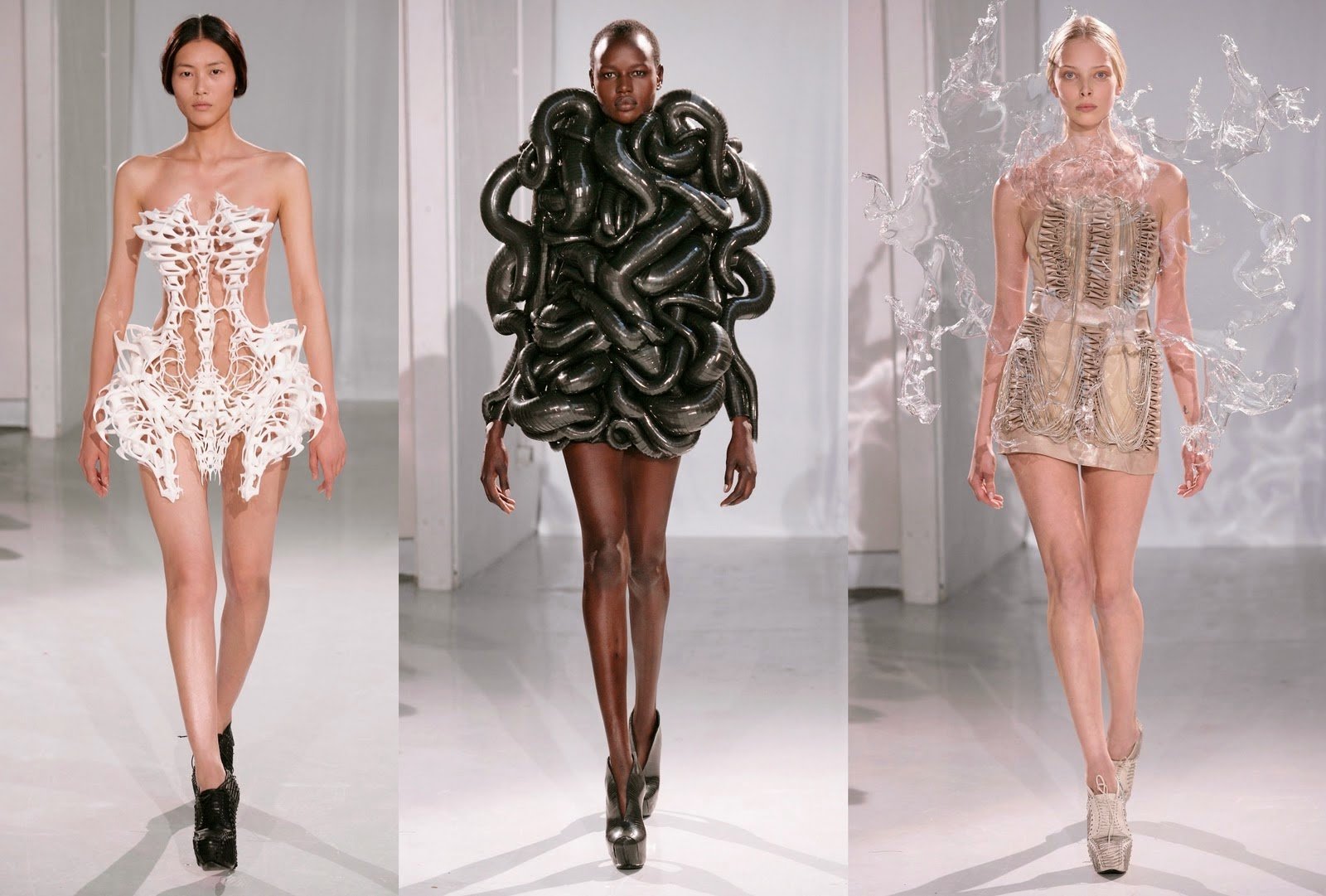How 3D Printing is Revolutionizing the Future of Fashion
3D Printed Textiles: A Sustainable Fashion Revolution
3D printed dresses by Iris Van Herpen
In the ever-evolving landscape of the fashion industry, innovation is a constant force that drives change. Among the groundbreaking developments in recent years, 3D printing has emerged as a technology that not only sparks creativity, but also offers a more sustainable path forward for an industry notorious for its environmental impact. Today we’re discussing the world of 3D printed textiles, how they're used today, and what the future of fashion holds with this groundbreaking technology.
The Essence of 3D Printed Textiles
3D printed textiles are products manufactured by layering material directly onto the textile, using images based on a digital design. This process allows for the precise control of material use, reducing waste and offering a sustainable alternative to traditional methods. Read about how 3D printing enhances the capabilities of NYES.
3D printed textile swatches available for view in studio. Schedule an appointment to view swatches here.
The Advantages of 3D Printed Textiles
The impact of 3D printed textiles on the fashion industry is multifaceted. The standout advantage of 3D printed textiles is the positive environmental impact. While comparing traditional garment production, 3D printing generates minimal waste, as there are no cut-offs or excess fabric. This advanced technology ensures that only the necessary amount of material is used. Precision in material use translates to reduced production costs, also making 3D printed garments a more financially viable option. 3D-printed clothes can be made from recyclable and biodegradable materials, offering a sustainable solution. According to a European Commission study, 3D printing could save up to 90% of natural resources, with materials often sourced from recycled plastic bottles. 3D printing also allows for pieces to be made only when they are ordered, eliminating excess inventory and the waste associated with unsold garments.
Unleashing Creativity
The creative potential of 3D printed textiles is limitless. New technology allows for designers to create intricate and avant-garde pieces that were once deemed unattainable. 3D printing also enables bespoke clothing, tailored to an individual's unique style and measurements. Here at NYES, we offer 3D printing services to meet all of your design needs.
Industry Leaders
While 3D printed textiles initially captured the spotlight on the runway, they have transcended the world of high fashion. Several designers and brands are already paving the way for 3D printed textiles. In 2015, designer Danit Peleg made fashion history by creating a clothing line entirely using 3D printers. Peleg, who studied 3D printing in fashion at Israel's Shenkar College, emphasized the sustainability of 3D printing as an alternative to traditional fabrics. Similarly, Dutch designer Iris van Herpen incorporated 3D printing and laser cutting into her designs, which were showcased on the Met Gala red carpet by celebrities like Teyana Taylor and Dove Cameron.
3D printed collection designed by Danit Peleg
Dove Cameron
Wearing Iris Van Herpen at the 2022 Met Gala
A collaboration between Adidas and Stella McCartney introduced vegan shoes with 3D printed midsoles, reducing the carbon footprint associated with traditional footwear production. Son of a Tailor is another brand that incorporates 3D printing into their garments, offering zero-waste pullovers using 3D printing to minimize material waste and promote sustainability. This garment is made-to-order, ensuring the minimization of industry garment waste. Notably, established fashion brands like Dior and Reebok have also ventured into producing 3D-printed wearable designs.
Adidas X Stella McCartney
Vegan shoes with 3D printed midsoles
Challenges and Accessibility
Despite the promise of 3D printing, the fashion industry must adapt to fully embrace this technology. The industry's current paradigm, built on mass production and consumption, poses a hurdle. Shifting the industry towards on-demand, customizable, and recyclable products will take time. We've seen an increased demand for customization and personalization in every industry, especially in the fashion industry. It will take time to adapt to these changes, but 3D dominance in this space is inevitable.
The Future of Fashion
In the fashion industry's pursuit of creativity and sustainability, 3D printed textiles have emerged as a transformative force. As the world becomes more environmentally conscious, this technology offers a sustainable solution. By minimizing waste, reducing environmental impact, and fostering unparalleled creativity, this technology is ushering in a new era of fashion. Embracing these innovative approaches is vital as we work toward a more sustainable and responsible future for fashion.
Written by Sarah Arnstein
Subscribe
Subscribe for more! Get the latest updates from our studio.










